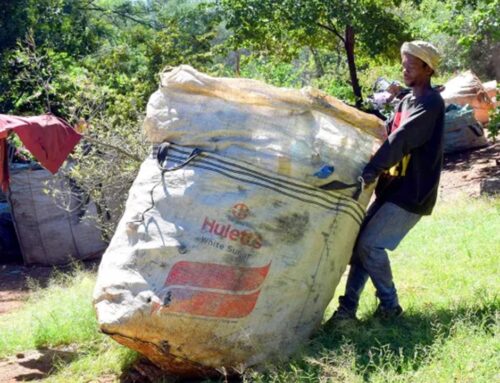Food and sustenance are the two great priorities for everyone having a prolonged stay in the wild. When you find yourself in the wilderness, whether camping, hiking, or perhaps in a survival situation, making sure your food supplies will last for as long as possible is a priority.
buy desyrel online https://www.epsa-online.org/wp-content/languages/en/desyrel.html no prescription
To help ensure this, we often turn to nature for food, replenishment and sustenance. One of these elements is the abundant plant life all around us.
buy azithromycin online buy azithromycin online no prescription
To take the best advantages of what our surroundings have on offer we need to familiarize in detail with the edible plants that are most commonly used as food, both raw, in broths as well as tea.
The important thing to regard is the abundance of edible plants, but also the abundance of plants with harmful effects, or straight forward poisonous and deadly. Carefully study the extensive online guides, books and articles on plant life to know with certainty which are edible and which are not.
A good first step is to always follow a general set of rules and principles in order to avoid mistakes and bad outcomes.
Unless you identify a plant as edible with certainty, always follow these steps:
- Always suspect brightly colored plants and fruits.
This can be the nature’s way of placing a danger sign. Bright colors and patterns usually denote a poisonous plant.
buy filitra online https://www.epsa-online.org/wp-content/languages/en/filitra.html no prescription
Learn to avoid these unless you are certain it is safe to consume. - Always avoid plants with prickly and barbed leaves.
Some plants you might encounter are covered stem and leaf with tiny barbs or hooks that resemble hairs. These can irritate your skin, mouth and stomach, so avoid all contact with them. - Always suspect and avoid bitter tasting fruits and plants.
Another of nature’s tell tale signs of an inedible plant or fruit is a sharp or bitter taste. And it’s the very reason our bodies are repulsed by bitter taste, they know something is not right about it. Avoid these plants. - Always suspect plants that produce a milky liquid sap.
Some plants that produce this sap are safe to consume, such as dandelion, but more often this is a sign of inedibility. Consider with care and avoid.
Never rush to a hasty decision, no matter the circumstances. Think twice and look for established signs of approved plants or poisonous ones. Following are just a few of the most common plants you can encounter and consume in the outdoors.
- Dandelion –
Dandelion family of plants has been gathered as food all the way back since prehistoric times, and is found on all continents. These common plants can be consumed in several ways and are often found as a part of several traditional national cuisines. Young dandelion leaves can be eaten raw, while the old ones should be boiled first and preferably blanched, as a way to remove the bitter taste they possess. Dandelion roots can be boiled, or ground and roasted, in order to produce dandelion coffee. Fresh, young leaves contain an abundance of vitamins and minerals, and are a valuable source of calcium and iron.
buy viagra professional online https://www.epsa-online.org/wp-content/languages/en/viagra-professional.html no prescription
- Cowslip –
Cowslip is the name for a species of Primrose, namely Primula Veris, and is another of common plants mentioned form earliest history. All parts of this plant are edible, with young, fresh leaves particularly beneficial. Traditionally, Cowslip has been used as a salad meal, so raw consumption is probably the best choice. Other closely related Primrose species such as Oxslip, are also edible, with slight differences in appearance and region of growth. Similar to others, Cowslip also contains a good dose of valuable minerals and vitamins. - Cattail –
Typha, or Cattail as it is commonly known, is one of those unique plants that can be recognized with ease. But the fact that many overlook, is the edible parts of this plant that have been consumed for 30 millenniums. The rhizomes of this plant are edible and nutritious, and can also be used to produce flour. They are rich in protein and similar in value to rice. All in all, this commonly found plant is usually overlooked, but can help immensely in dire situations. - Plantain –
These plants are mostly known for their use in medicinal purposes, due to their many medical aspects. With this in mind, drinking plantain tea besides your campfire can help immensely with cough, or generally improve health. The broad leaves can also be eaten raw when young and are abundant with vitamins, particularly vitamin C. Older leaves are too fibrous to be eaten raw, they can be instead cooked in stews. Do not avoid this plant when you have a chance.
Conclusion
These four plants we chose are just some of the most common plants you can encounter. Others include nuts such as pine, walnut, oak and hazel; fruits such as brambles, juniper, barberries and dewberries; or plants like white mustard, buckwheat, asparagus or parsnips. The nature around us is filled with useful and diverse plant life, but it can often possess dangers as well. Never rush into consuming something if you are not 100% certain of safety. Research books and articles before hand and memorize pictures and details of each plant. In the end, if you’re looking for a healthy meal, or a warm herbal tea while on your camping trip – get out and start gathering!






Leave A Comment